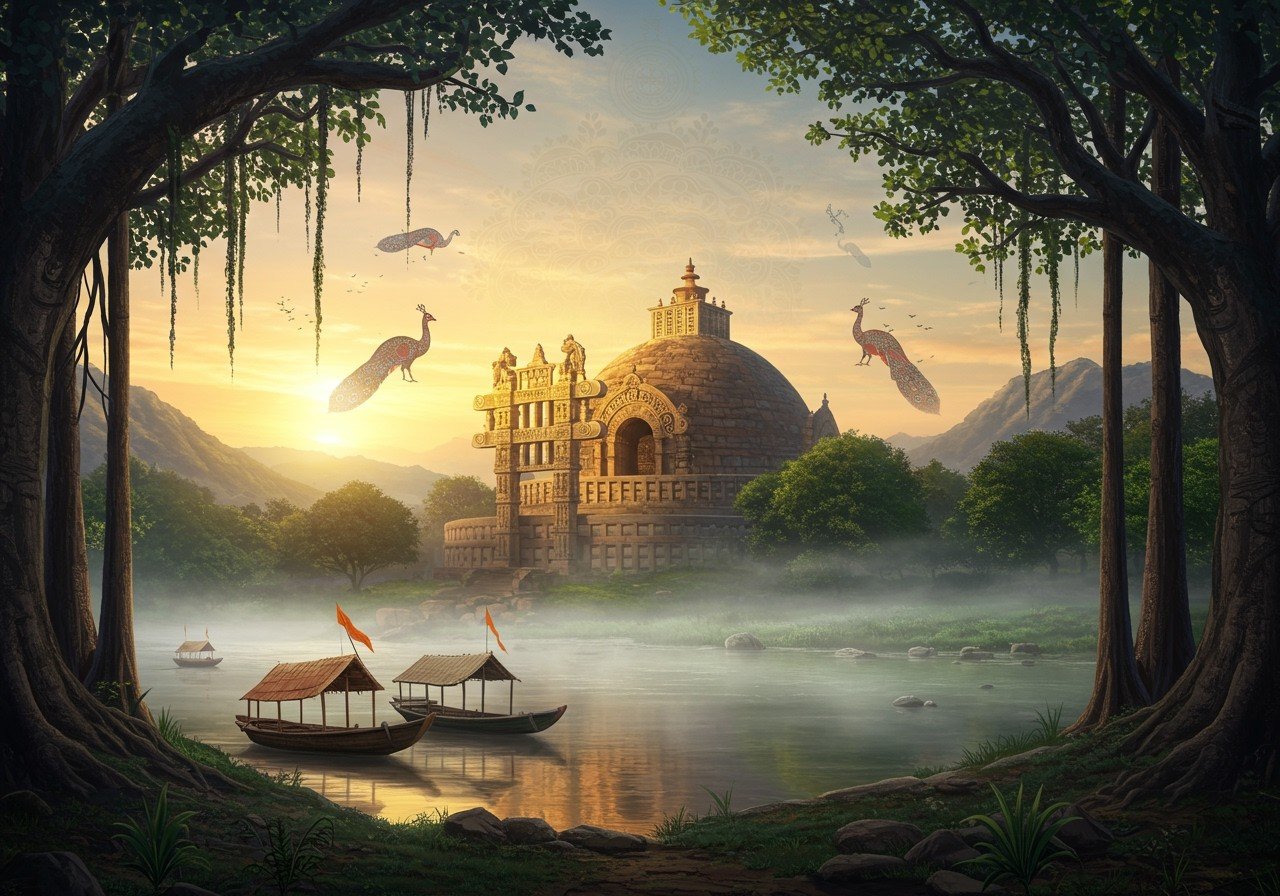
Madhya Pradesh, aptly named the “Heart of India,” is a central Indian state with a rich tapestry of history, diverse geography, and vibrant culture. From ancient empires to modern advancements, Madhya Pradesh’s story is captivating. This blog delves into the formation of the state, its geographical significance, and its enduring cultural heritage.
The Formation of Madhya Pradesh
Madhya Pradesh, meaning “Central Province,” boasts a history that stretches back centuries. The region witnessed the rise and fall of powerful empires, including the Nanda, Maurya, and Gupta dynasties. Areas like Malwa and Bundelkhand played crucial roles during these periods. Under British rule, it was known as the Central Provinces and Berar. Following India’s independence in 1947, several princely states merged in 1956 to create the current state of Madhya Pradesh. In 2000, Chhattisgarh was carved out of Madhya Pradesh, forming a separate state. This complex history has contributed to the state’s rich and diverse cultural blend.
Geographical Location and Significance
Madhya Pradesh is a landlocked state, surrounded by Uttar Pradesh, Chhattisgarh, Maharashtra, Gujarat, and Rajasthan. The Vindhya and Satpura mountain ranges contribute to its varied landscape. Life-giving rivers such as the Narmada, Tapti, Betwa, and Chambal flow through the state, nurturing its fertile lands. The climate ranges from tropical to subtropical, fostering a diverse range of flora and fauna. The state is home to renowned national parks like Kanha and Bandhavgarh, havens for wildlife enthusiasts. Major cities include Bhopal (the capital), Indore, Gwalior, Jabalpur, and Sagar, each contributing to the state’s economic and cultural vibrancy.
Why Madhya Pradesh is Called the Heart of India
Madhya Pradesh’s central location makes it a vital hub for trade and travel, connecting northern and southern India. Its cultural landmarks, including Khajuraho, Sanchi, and Bhimbetka, draw visitors from around the globe. The state’s cultural heritage is incredibly rich, encompassing classical dance forms like Bharatanatyam and folk traditions such as Gond and Baiga. Madhya Pradesh has made significant contributions to Indian literature, classical music, and various art forms. It represents a unique confluence of tribal and mainstream Indian cultures.
A Journey Through Madhya Pradesh’s Cultural Heritage
Madhya Pradesh’s cultural heritage is a reflection of its historical and geographical diversity. Ancient architectural marvels like the Khajuraho temples and the Sanchi Stupa stand as testaments to its rich past. Festivals such as Diwali, Holi, and Navratri are celebrated with distinctive regional flavors, adding to the state’s vibrant cultural tapestry. Traditional crafts like Chanderi and Maheshwari textiles showcase the artistic skills passed down through generations. The state’s cuisine has been influenced by the various dynasties that have ruled the region. The Gwalior Gharana, a renowned school of Indian classical music, has its roots in Madhya Pradesh. Tribal communities play a vital role in preserving traditional art forms, keeping ancient traditions alive.
Modern Madhya Pradesh: A Blend of Tradition and Progress
Today, Madhya Pradesh seamlessly blends tradition with progress. Bhopal, the capital city, embodies modernity with its developing infrastructure and vibrant cultural scene. Indore, a major commercial hub, is known for its thriving businesses and bustling markets. Gwalior, Jabalpur, and Sagar each contribute uniquely to the state’s overall development.
Agriculture remains the backbone of Madhya Pradesh’s economy, with wheat, rice, and soybeans as major crops. The state is also a leading producer of pulses and oilseeds. Industries such as textiles, cement, and automobiles are experiencing rapid growth, contributing to the state’s economic progress.
Tourism plays a crucial role in Madhya Pradesh’s economy. The state government has invested in preserving historical sites like Khajuraho and Sanchi. National parks like Kanha and Bandhavgarh attract nature lovers worldwide. Festivals and cultural events are promoted to showcase the state’s rich heritage.
Plan a spiritual journey to these sacred sites with Poojn.in, your trusted partner for all your puja needs.
Education is a key focus area in Madhya Pradesh. The state has several prestigious educational institutions that provide quality education and contribute to the state’s intellectual growth. The younger generation is increasingly involved in technology, healthcare, and entrepreneurship, driving the state’s progress.
Looking for puja items for your spiritual journey? Check out Poojn.in’s collection of Bel malas, Tulsi malas, and more. We offer a wide variety of authentic puja samagri to enhance your spiritual practices.
Infrastructure development has seen significant improvements in Madhya Pradesh. Roads and railways connect cities and towns efficiently. Urban areas are expanding with modern amenities, supporting economic growth and improving the quality of life for residents.
FAQs on Madhya Pradesh
What is the capital of Madhya Pradesh? Bhopal is the capital city of Madhya Pradesh.
What are some other major cities in Madhya Pradesh? Indore, Gwalior, Jabalpur, and Sagar are other important cities in the state.
What is the population of Madhya Pradesh? Madhya Pradesh is the fifth largest state by population, with over 72 million residents.
Conclusion
Madhya Pradesh’s journey reflects India’s broader narrative of heritage and progress. The state’s rich history, diverse geography, and vibrant culture make it a unique and captivating destination. As Madhya Pradesh continues to evolve, it honors its past while embracing a future filled with promise and innovation. Whether you’re exploring historical sites, experiencing local festivals, or visiting modern cities, Madhya Pradesh offers a warm and welcoming experience that celebrates its rich legacy and dynamic present.


